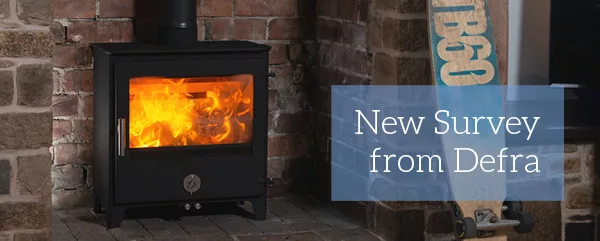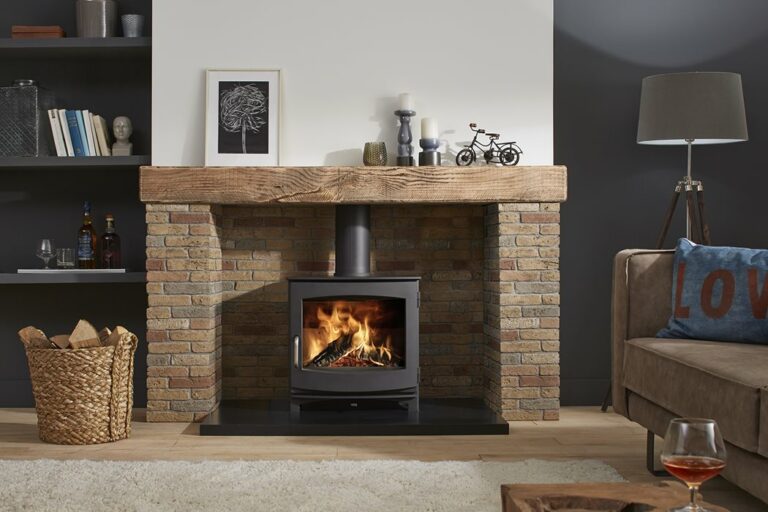
Understanding burning in domestic homes
Understanding the impact of domestic combustion on air quality has always been a challenge. Defra’s Clean Air Strategy identifies that domestic combustion accounts for 38% of fine particulate matter. The figure of 38% was based on a BEIS survey from 2015, the results of which can be viewed here. This survey forms the basis of figures generated in the National Atmospheric Emissions Inventory (NAEI). The NAEI primarily uses The Digest of UK Energy Statistics (DUKES).
Industry has long believed this figure to be inaccurate, as highlighted in our own scientific research paper, A Review of the Impact of Domestic Combustion on UK Air Quality, published in 2019 and available to read here.

Defra Research Project
More recently Defra undertook further research to gain a better understanding of burning in UK homes and gardens. The research was carried out by Kantar, a specialist organisation in data and research. The research was designed to update understanding of how much solid fuel burning is happening domestically in the UK, including non-wood solid fuels and burning outdoors in gardens.
The in depth research looks at wide ranging factors for both indoor and outdoor burning; ownership of appliances, the role of solid fuel heating systems, types of appliances & fuels. In addition to sourcing fuels, burning practices, who burns and the views of non-burners.
As a supplement to the research paper, Annexe A, titled Estimating UK domestic solid fuel consumption, using Kantar data, looks more closely at the estimates of the UK quantity of solid fuels burned domestically (2018-19). The paper also objectively compares these results with the estimates published by the Department of Business, Energy and Industrial Strategy (BEIS) in The Digest of UK Energy Statistics (DUKES) 20191 for residential solid fuel use in 2018.
For coal and coal based manufactured solid fuels, it can be far simpler to estimate emissions than for wood as there is an established set of data to base the estimates on. The Kantar survey suggests that coal/MSF use was 16% higher than is being stated by DUKES, at 0.88Mt.
The Kantar-based estimate for wood fuel consumption for domestic burning (indoors and out) for 2018-19 is 10,886 GWh (gross) (or 2.40 Mt [NCV] when converted to tonnes). This is 58% less than the DUKES estimate for 2018.
Overall, Defra believes the Kantar core activity data is likely to better reflect current burning activity. This is because, building on the experience of the DWUS based on advice from BEIS, the questions on appliance running time and fuel usage were focused on the previous week to aid recollection and to prevent over-generalising. The data is also more recent, with a base sample size that is larger.
Why is all of this so important?
Making estimates of the wood burning market can be challenging. The research identifies that Defra believes the Kantar core activity data is likely to better reflect current burning activity.
BEIS is now considering the results of this quantification and the explanations of the sources of differences between the resulting estimates reported and those of DUKES to decide what changes, if any, they will make to the next update of DUKES in 2021 (covering 2020). The response will be published in Energy Trends.
It is not yet known if this work will have an impact on the DUKES data or the NAEI, this will only be known on publication of the data.
Moving forward
Government and industry are both committed to improving air quality, with a range of strategies outlined in the 2019 Clean Air Strategy. Some of the measures have already been implemented and are outlined below.
- Legislate to prohibit sale of the most polluting fuels
- Ensure that only the cleanest stoves are available for sale by 2022
- Make changes to existing smoke control legislation to make it easier to enforce
- Give new powers to local authorities to take action in areas of high pollution
- Work across government to look at opportunities to align work on air quality, clean growth and fuel poverty in future policy design
- Develop a dedicated communications campaign targeted at domestic burners, to improve awareness of the environmental impact of their actions
- Work with industry to identify an appropriate test standard for new solid fuels entering the market
Whilst many of the actions from the Strategy are well underway, the Environment Bill will introduce further action, including changes to existing smoke control legislation, making it easier to enforce. The Environment Bill originated in The House of Commons and is at report stage ahead of a third reading. Report stage is usually followed immediately by debate on the Bill’s third reading. The Bill will then follow through the stages in the House of Lords before the final phase into Royal Assent.
We all have an important role to play in improving air quality and industry continues to take steps to reducing the impact from domestic burning.
Follow the HETAS monthly newsletters, website and social media channels for further updates on this important topic.



